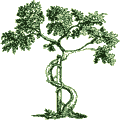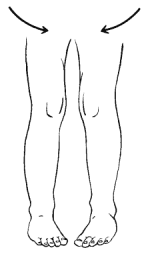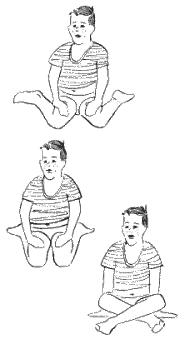
|
|||||||
Femoral Torsion
What is it?
The upper end of the femur consists of the neck and head (the ball) articulating with the acetabulum (or cup) at the hip joint. The neck and head of the femur is pointed inwards with a slight forward inclination. This slight forward inclination is called femoral neck anteversion.
The amount of femoral neck anteversion is 40 degrees at birth, and decreases with age to about 15 degrees at maturity. This is the normal evolutionary process of growth in most people. In some instances, the femoral neck anteversion present at birth does not decrease, but stays excessive compared to age, giving rise to the condtion of excessive femoral neck anteversion, or femoral torsion.

What are the symptoms?
The typical presentation is a child between age 3 to 8 brought in by parents because of concerns about intoeing. He or she may even have had treatment for metatarsus adductus or tibial torsion in the past, and parents may think that there has been a recurrence of the old problem.
Typically the child stands or walks with the knee caps and toes pointing in.
What does your doctor do about it?
Femoral torsion was in the past treated by use of twister cables- twisted strands that connect a waist belt to shoes that tend to twist the feet outwards. Kids wore them for years, and they do improve the position of the feet on standing and walking.
However, recent research consisting of longitudinal studies of thousands of children confirmed that most children with femoral torsion resolve spontaneously by age 10. Even in those cases that did not resolve completely, it improves sufficiently to be of no functional significance.
There are still instances where twister cables may be needed. But this is usually in neuromuscular impaired kids, where normal muscle function is not present to effect the evolutionary corrective process.

For most regular kids, the most common cause of persistent femoral torsion is habitual kneeling or sitting in the W-position or television position. These positions perpetuate femoral torsion because they keep the hips in the internally rotated position. It is therefore important that all children, when sitting on the floor to play, learn to sit cross-legged Indian-style. This position places the hips in the externally rotated position and encourages the normal modeling process.
Fig: The W-position and kneeling position which should
be discouraged. The cross-legged or Indian position should be encouraged.
Parents sometimes buy their children heavy corrective shoes, hoping that they will improve the child’s walking. On the contrary, children with femoral torsion walk worse with heavy leather shoes. Since the "problem" is in the hips, any treatment directed at the feet is not expected to help.
What can be expected in the future?
Intoeing from femoral torsion is a universal condition that resolves spontaneously by age 10. In the exceptional case, usually associated with neuromuscular impairment, twister cables may be required. In most instances, understanding of the natural history on the part of parents will help to avoid unnecessary treatment.
NOTICE: The information presented is for your information only, and not a substitute for the medical advice of a qualified physician. Neither the author nor the publisher will be responsible for any harm or injury resulting from interpretations of the materials in this article.
Questions
or comments? Post your thoughts in the Orthoseek
Message Forum!
Find a pediatric orthopedic surgeon
in an area near you.
Home | About Us | Orthopaedic Topics | Message Forum
![]()
Comments, questions, or suggestions are welcome. Please
contact us using this form.